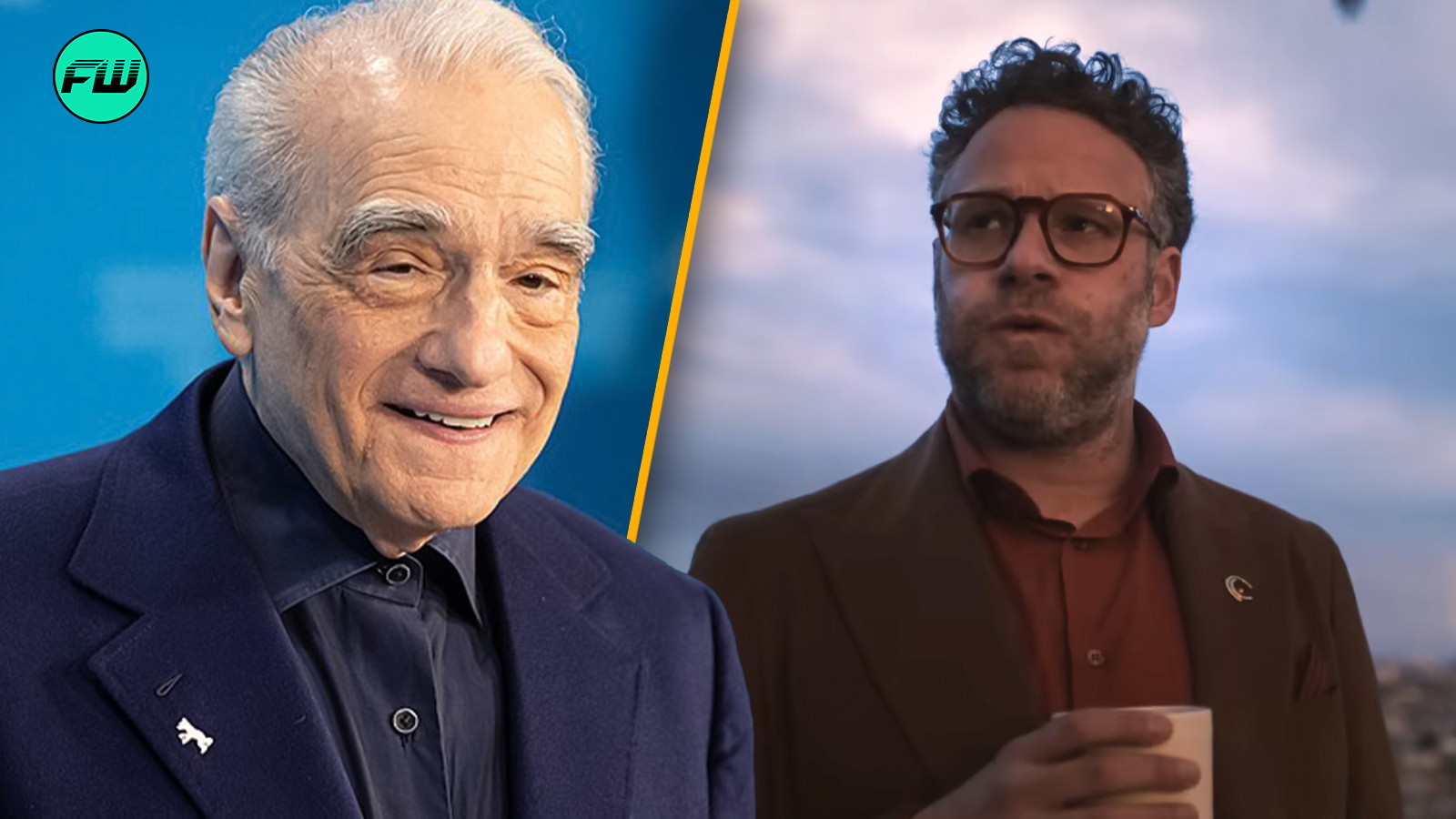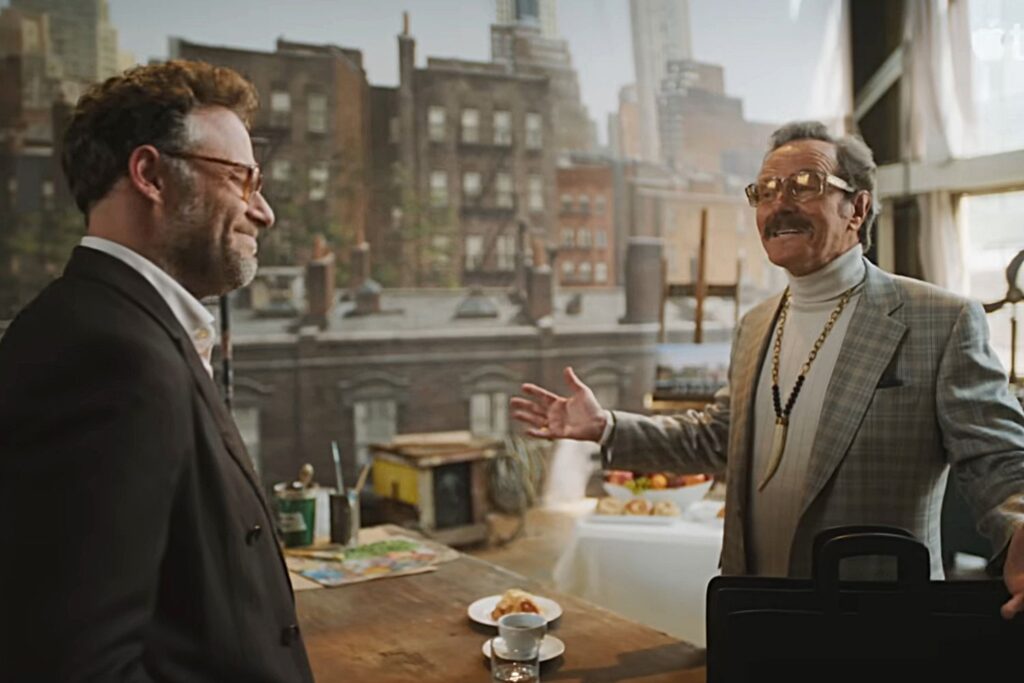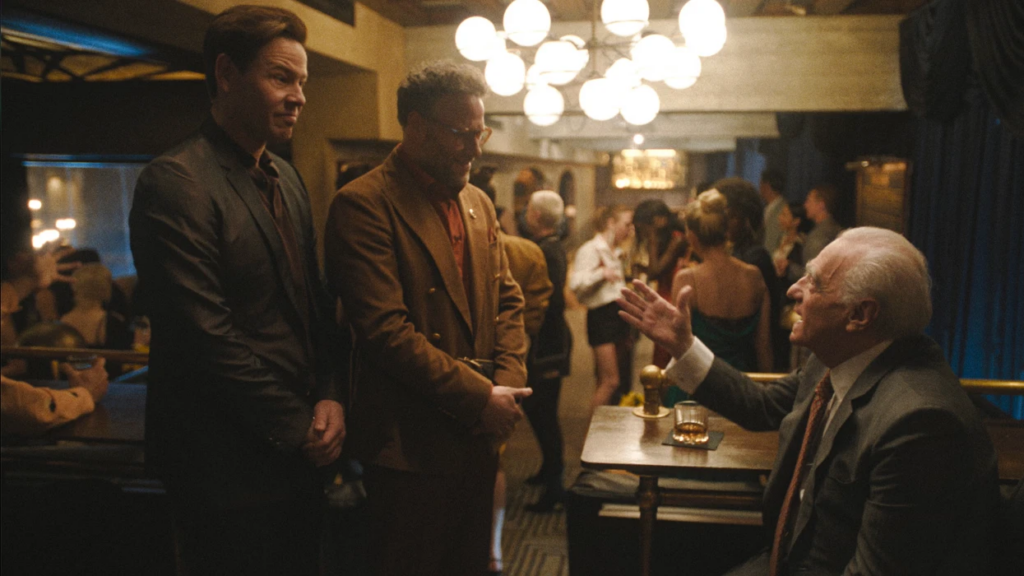
Imagine pitching a movie so absurd that even Hollywood’s wildest execs would raise an eyebrow. Now, imagine trying to rope in Martin Scorsese, yes, that Martin Scorsese, to make an appearance in a comedy about making that movie. Sounds impossible, right?
Well, welcome to Seth Rogen’s world, where the unexpected is just another Tuesday. Apple TV+’s latest comedy, The Studio, throws audiences into the chaotic world of Hollywood filmmaking, where bad ideas sometimes lead to billion-dollar blockbusters. And who better to navigate this madness than Seth Rogen, a man whose entire career is built on turning ridiculous premises into gold?

But while Rogen has played plenty of over-the-top characters, his latest role as Matt Remick, a studio executive trying to fast-track a Kool-Aid movie, might just be his most outrageous yet. But the real magic trick? Convincing Martin Scorsese to play along.
So, how did Seth Rogen pull off the impossible?

Martin Scorsese, the mastermind behind Goodfellas, Taxi Driver, and The Irishman, is a man known for his cinematic brilliance, not his comedic cameos. So how in the world did Seth Rogen convince him to step in front of the camera for The Studio?
First, it wasn’t through some longstanding Hollywood friendship. In fact, they’d never even met before. So, like any regular person trying to get the attention of a film legend, Rogen and his co-creator Evan Goldberg sent the script to Scorsese’s manager and crossed their fingers. Shockingly, Scorsese responded. And not just with a polite “Thanks, but no thanks.” He actually agreed. Rogen told Variety,
It was really scary. Not only were we putting ourselves in a position where we had to direct Scorsese, but also we’re shooting him in a very specific way, which is one of the hardest ways to perform. You can’t reset the line if you bumble it. If you mess up a line, you have to stop and start over from the beginning.
It helped that Scorsese’s role in The Studio was oddly perfect for him. In the show, Rogen’s character tries to convince Scorsese to direct a Kool-Aid movie by subtly manipulating the situation so that Scorsese thinks it is his own idea. Scorsese pitched a movie about Jonestown, the 1978 mass murder-suicide involving a cult leader and a lethal batch of Kool-Aid.
So, Rogen’s character, being the overeager cinephile he is, tries to reverse-engineer this dark, serious idea into a mainstream Hollywood blockbuster. Because of course, he does. And the best part? It works. Not just in the show, but in real life. Rogen had the ultimate Hollywood moment, convincing one of the greatest filmmakers of all time to play along in one of the most ridiculous scenarios ever.
Martin Scorsese’s cameo was worthy of the Oscars

For Martin Scorsese, it wasn’t just about lending his credibility to a comedy, it was about being part of something that cleverly plays with Hollywood’s obsession with intellectual property. It also didn’t hurt that his role was written so well that it actually made sense in the world of The Studio. Rogen explained to Variety,
The cameos had to all be people that served a very specific role in the stories. For Scorsese, the role was someone my character would fucking do anything to work with, who would pound this puzzle piece into a shape that it clearly doesn’t belong in just for the opportunity to work with.
In other words, if you’re going to make an absolutely insane creative decision, you may as well swing for the fences. And in Hollywood, no fence is higher than Scorsese. The result? A scene that is as hilarious as it is surreal. Seeing Scorsese seriously pitch a Jonestown movie while Rogen’s character desperately tries to turn it into a Kool-Aid blockbuster is peak Hollywood satire.
It’s both an absurd fever dream and an uncomfortably accurate portrayal of how major studios operate. So, if you ever find yourself doubting whether a crazy idea could work, just remember, Seth Rogen convinced Martin Scorsese to make a cameo in a comedy about making a Kool-Aid movie. Anything is possible.
The Studio can be streamed on Apple TV+.
This post belongs to FandomWire and first appeared on FandomWire


